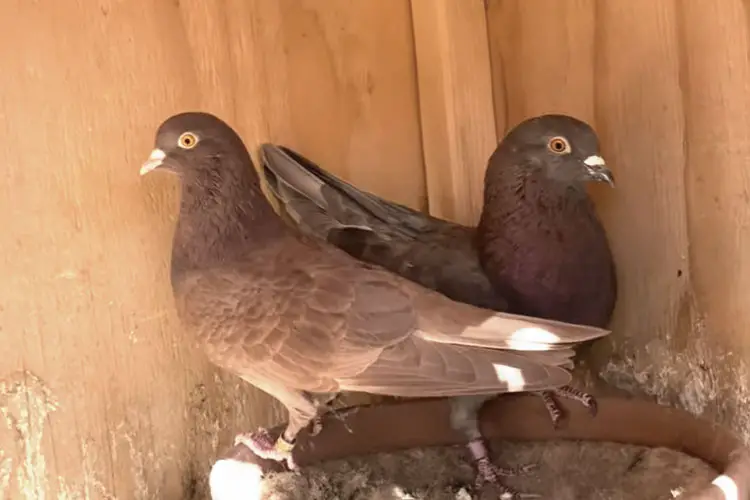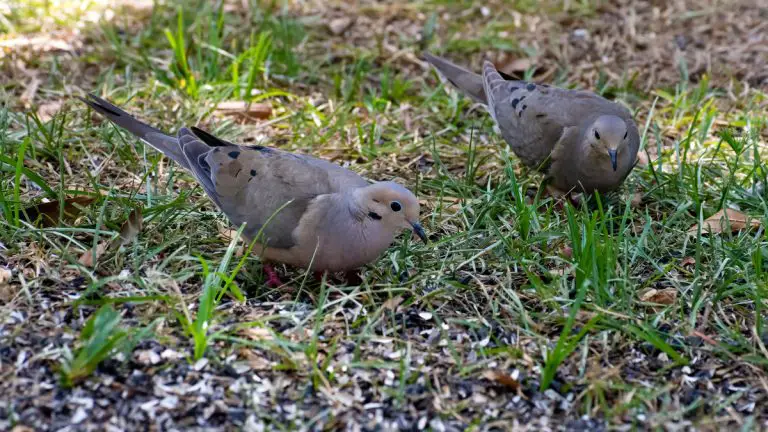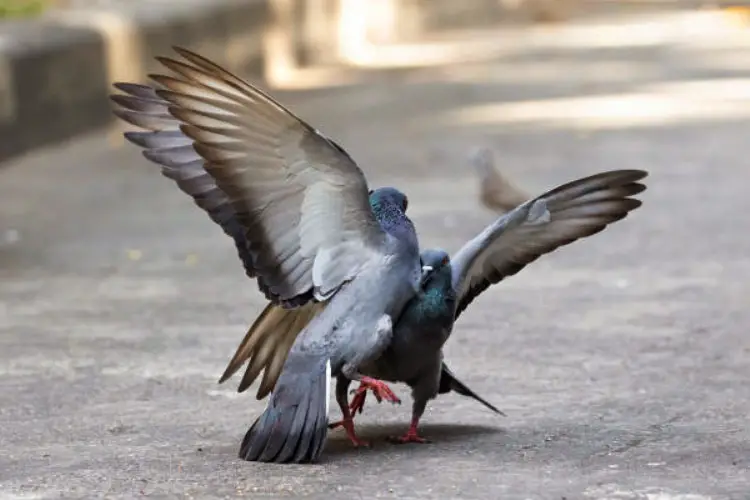Pigeon Removal Cost: How Much Does It Cost?
If you’ve ever had the unfortunate experience of dealing with a pigeon infestation, you know just how frustrating and costly it can be. These pesky birds can cause damage to your property, create a mess, and even pose health risks. So, when it comes to getting rid of them, it’s important to consider the cost involved. In this article, I’ll break down the factors that can influence the cost of pigeon removal and give you an idea of what you can expect to pay for this service. Whether you’re a homeowner or a business owner, understanding the cost of pigeon removal is crucial in making an informed decision and finding the right solution for your situation.
When it comes to pigeon removal, there are several factors that can impact the cost. The size of the infestation, the location of your property, and the methods used for removal all play a role in determining the final price. Additionally, the extent of damage caused by the pigeons may also affect the cost, as repairs and cleanup may be necessary. By considering these factors, you can get a better understanding of the potential costs involved in pigeon removal and make a more informed decision. So, let’s dive in and explore the various aspects that can influence the price of getting rid of these feathered pests.
Factors that Influence the Cost of Pigeon Removal
When it comes to pigeon removal, the cost can vary depending on several factors. Understanding these factors is key to making an informed decision and finding the right solution. Let’s take a closer look at the elements that can impact the final price:

1. Size of the Infestation
The size of the pigeon infestation plays a significant role in determining the cost of removal. The larger the infestation, the more work and resources are required to address the problem effectively. Pigeon removal experts will need to assess the extent of the infestation and develop a suitable plan of action, which will ultimately influence the overall cost.
2. Location of the Property
The location of the property is another factor that can affect the cost of pigeon removal. Urban areas with high pigeon populations may have higher removal costs compared to rural areas. This is mainly due to the increased difficulty and resources required to access and address the infestation in densely populated areas.
3. Methods Used for Removal
The methods utilized for pigeon removal can also impact the cost. There are various techniques available, ranging from humane deterrents to physical exclusion methods. Some methods may be more labor-intensive and require specialized equipment or professional expertise, which can influence the overall expense.
4. Extent of Damage Caused by Pigeons
Pigeon infestations can often result in damage to buildings and structures. If the pigeons have caused significant damage to the property, the cost of removal may include not only their removal but also repairs and restoration. The extent of the damage will be a determining factor in the overall cost of pigeon removal.
By considering these factors, individuals can get a better understanding of the potential costs involved in pigeon removal. It’s important to consult with professionals in the field to assess the situation accurately and develop a tailored plan of action. Engaging an experienced and reputable pigeon removal service will ensure the infestation is thoroughly addressed, providing a safe and pigeon-free environment.
Size of the Infestation
As I mentioned earlier, the size of the pigeon infestation is a significant factor that can influence the cost of pigeon removal. It’s important to consider the extent of the problem before determining the appropriate solution.
Here are a few key points to keep in mind regarding the size of the infestation:
- Number of pigeons: The more pigeons present on your property, the more complex and time-consuming the removal process can be. Larger flocks of pigeons may require a more extensive approach to effectively eliminate them.
- Nesting sites: Pigeons tend to build their nests in or around structures such as roofs, balconies, and attics. The more nesting sites there are, the more difficult it can be to locate and remove them. Additionally, multiple nesting sites often indicate a larger pigeon population.
- Damage caused: Pigeons can cause significant damage to buildings, structures, and even electrical systems. If the infestation has resulted in structural damage or poses a threat to your property, additional measures may be required to not only remove the pigeons but also address the damage caused.
It’s crucial to understand that the size of the infestation plays a key role in determining the cost of pigeon removal. A larger infestation typically requires more time, resources, and expertise to effectively resolve the issue. Therefore, it’s always advisable to consult with a professional to accurately assess the extent of the infestation and develop a suitable plan of action.
Next, let’s move on to another important factor that can influence the cost of pigeon removal – the location of the property.
Location of Your Property
When it comes to the cost of pigeon removal, the location of your property plays a crucial role. The specific area where your property is situated can impact the difficulty and complexity of the pigeon removal process, which in turn affects the overall cost.

Here are a few factors related to the location of your property that can influence the cost of pigeon removal:
1. Urban vs. Rural Areas
Urban areas are often more challenging to tackle when it comes to pigeon infestations. With a larger concentration of buildings, commercial establishments, and food sources, pigeons find urban areas to be an ideal environment for nesting and breeding. As a result, removing pigeons from urban settings can require more extensive measures and equipment, leading to higher costs.
On the other hand, rural areas may have fewer pigeon-related problems due to the ample space available and a lower concentration of potential nesting sites. Therefore, pigeon removal costs in rural areas are typically more affordable.
2. Accessibility
The accessibility of your property plays a vital role in determining the cost of pigeon removal. If your property is located in an area that is difficult to access or requires special equipment, it can add additional expenses to the overall removal process. For example, tall buildings or structures with limited access points may require the use of lifts, scaffolding, or other specialized equipment, which can increase the cost.
3. Regional Factors
Different regions may have varying levels of pigeon infestation problems. Some areas may experience higher pigeon populations and more significant issues, while others may have fewer problems to deal with. The prevalence of pigeons in a region can impact the demand for pigeon removal services and ultimately influence the costs.
The location of your property is an essential factor to consider when estimating the cost of pigeon removal. Urban areas, limited accessibility, and regional factors can all contribute to the complexity of the removal process and affect the overall expenses. Understanding these factors will help you make informed decisions and find the right solution for your pigeon problem.
Methods Used for Pigeon Removal

When it comes to removing pigeons from properties, there are several methods that professionals commonly use. These methods are designed to be effective in safely removing pigeons while minimizing harm to the birds. Here are some of the most common methods used for pigeon removal:
- Netting: This method involves installing nets in areas where pigeons roost or nest. The nets act as a physical barrier, preventing pigeons from gaining access to these areas. Netting is a popular option for larger buildings and structures.
- Spikes: Pigeon spikes are often installed on ledges, roofs, and other areas where pigeons tend to gather and roost. These spikes make it uncomfortable for pigeons to land and discourage them from returning to the area.
- Trapping: Trapping is another method used for pigeon removal. Live traps are set up with bait to attract pigeons, and once the birds are caught, they can be safely removed and relocated.
- Deterrents: Various deterrents can be used to discourage pigeons from roosting or nesting on a property. These can include visual deterrents, such as scare devices and reflective surfaces, as well as audio deterrents, such as ultrasonic devices that emit sounds unpleasant to pigeons.
- Cleaning and sanitation: Proper cleaning and sanitation measures are essential for pigeon removal. This includes removing nests, droppings, and other debris that can attract pigeons. Cleaning the area with disinfectants can also help deter pigeons from returning.
It’s important to note that the method used for pigeon removal may vary depending on the specific situation and the severity of the pigeon problem. A professional pest control specialist can assess the situation and recommend the most appropriate method for effective pigeon removal.
Cost Considerations
The cost of pigeon removal can vary depending on several factors. Some of the key considerations that can influence the cost include:
- Location: Urban areas with a higher concentration of buildings and food sources tend to have more significant pigeon problems, leading to higher removal costs. On the other hand, rural areas typically have fewer pigeon-related issues and therefore more affordable removal costs.
- Accessibility: The accessibility of the property can also affect the cost of pigeon removal. If the property is challenging to reach or requires specialized equipment or techniques, the removal process may be more labor-intensive and costly.
Extent of Damage Caused by Pigeons

Pigeons can cause a range of problems when they take up residence in or around buildings. The extent of the damage caused by pigeons can vary depending on several factors, including the size of the pigeon population and the duration of their presence. Here are some common issues associated with pigeon infestations:
- Structural Damage: Pigeons are known to roost and nest on building structures, such as roofs, ledges, and balconies. Over time, their droppings can accumulate and cause damage to the building materials. The acidic nature of pigeon droppings can weaken surfaces like wood, metal, and concrete, leading to corrosion, decay, and deterioration of the affected areas.
- Health Risks: Pigeon droppings not only cause structural damage but can also pose significant health risks. The droppings may contain bacteria, fungi, parasites, and viruses that can be harmful to humans. Inhalation of dried pigeon droppings can lead to respiratory issues, while direct contact can result in skin irritation and infections. It’s important to address pigeon infestations promptly to minimize the potential health hazards.
- Nuisance and Noise: Pigeons are notorious for their cooing sounds, which can be quite loud, especially during nesting season. Their constant presence can disturb the peace and tranquility of an environment, whether it’s a residential area or a commercial space. Pigeons can also create a mess with their droppings, feathers, and nesting materials, making the affected areas unsightly and difficult to clean.
- Contamination of Food and Water: Pigeons are drawn to food sources, and when they infest areas near restaurants, cafes, or outdoor dining spaces, they can contaminate the food and water with their droppings and feathers. This poses a serious risk of foodborne illnesses and can damage the reputation of businesses that fail to address the pigeon problem.
- Damage to Vehicles: Pigeons are not limited to buildings; they can also cause damage to vehicles. Pigeon droppings can harm the paint finish on cars, causing stains and corrosion over time. The acidic nature of the droppings can eat away at the protective layer and leave permanent marks if not cleaned promptly.
Conclusion
Pigeon infestations can have significant consequences for both the structural integrity of buildings and the health and well-being of individuals. The acidic nature of pigeon droppings can lead to corrosion and decay of building materials, resulting in costly repairs. Moreover, the presence of bacteria, fungi, parasites, and viruses in pigeon droppings poses health risks to humans, making it crucial to address infestations promptly.
Furthermore, the nuisance caused by pigeons with their cooing sounds, mess, and potential contamination of food and water sources cannot be overlooked. Businesses may suffer from a damaged reputation, and individuals may experience disruptions in their daily lives due to the presence of pigeons.
When it comes to pigeon removal, the cost can vary depending on factors such as the extent of the infestation, the size of the building, and the methods used. It is advisable to consult with professionals who specialize in pigeon removal to assess the situation and determine the most effective and cost-efficient solution.
Addressing a pigeon infestation promptly is crucial to mitigate the potential damage to buildings and safeguard the health and well-being of individuals.







